The news that Nuno Espirito Santo would step down at the end of the current season sent shockwaves throughout the Premier League. Daniel Levy and the board at Tottenham Hotspur’s ears pricked up to the news but it has been made aware now that he is an option no longer. The fact that he stepped down, however, was not the surprise, rather the timing of it. He had just finished the final press conference of the season at the time the news was made official, with no talk of the Portuguese leaving.
Contact immediately begun between Wolves and former Benfica head coach Bruno Lage. Portuguese (because, of course he is), 45-years-old, and with a couple of years of managing one of the Primeira Liga’s leading sides under his belt, Lage will first have to go through the legal details of his arrival. This analysis will explore his philosophy and gather if he suits the Wolves posting.
In this tactical analysis, we will assess what went right and wrong at Benfica, seeing if his tactics suit Wolves, and who some of his key players could be.
System of choice & defensive setup
Bruno Lage was promoted from the B team and immediately implemented a 4-4-2 formation, which previous coach Rui Vitória had dabbled with, although primarily utilising a 4-3-3 system. Lage introduced an intensive, very attacking approach to Benfica’s style of play that went on to completely dominate the league and win the title out of the tight grasp that Porto seemingly had at the time. At the time of Lage’s appointment in January 2019, winning the league for Porto seemed like a formality.
This did mean that Benfica were not often finding themselves defending for extended periods. When they were, their defensive setup stuck to a flat 4-4-2, fairly wide in shape to allow them to stretch the pitch in transition. Initially, the strikers look to block off passing lanes from the defence to the midfield. This was rarely, however, an aggressive press from the front.
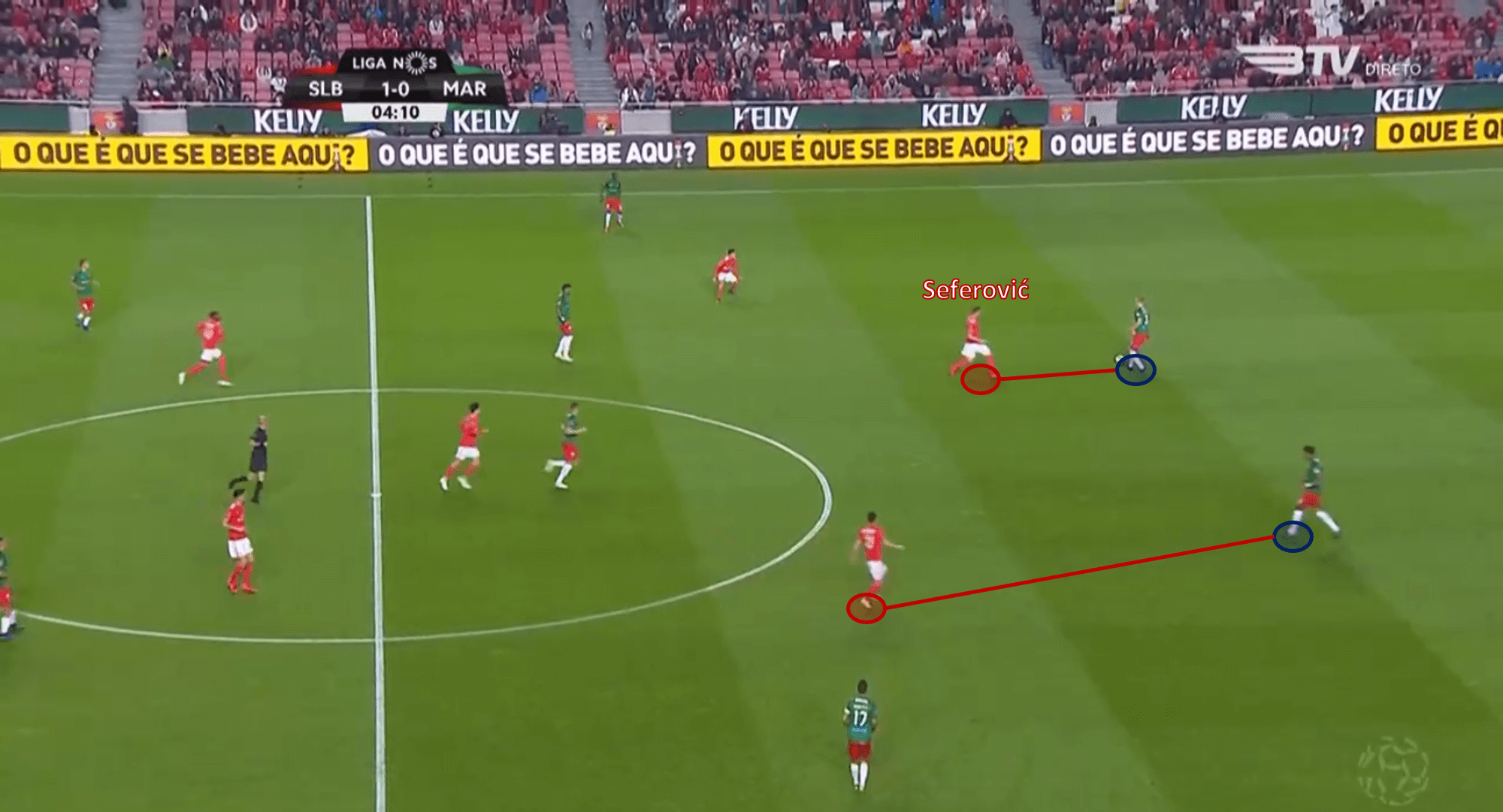
The two strikers keep tabs on the two defenders while Seferović looks to cut off the passing lane.
Once the first line of the press is broken, the midfield duo of Gabriel Pires and Andreas Samaris in the 2018/19 season stepped out of their line to actively press their opponent. Samaris was used less frequently in the following season, promptly replaced by ex-QPR tricks and flicks master Adel Taarabt, occupying more of a deep-lying role than we previously knew him for.
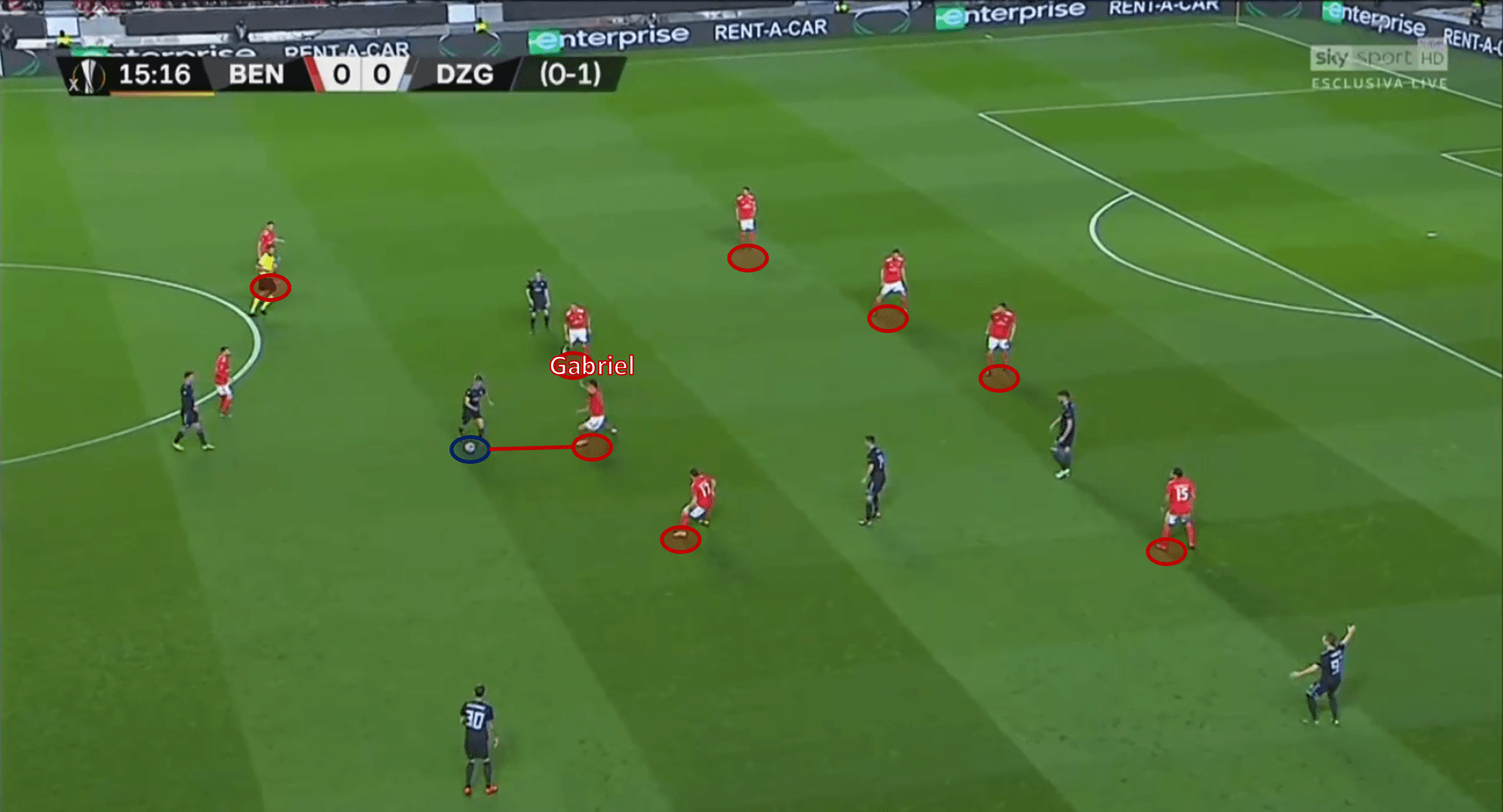
We can see Benfica’s 4-4-2 pressing structure, with Gabriel more aggressively pressing the ball-carrier.
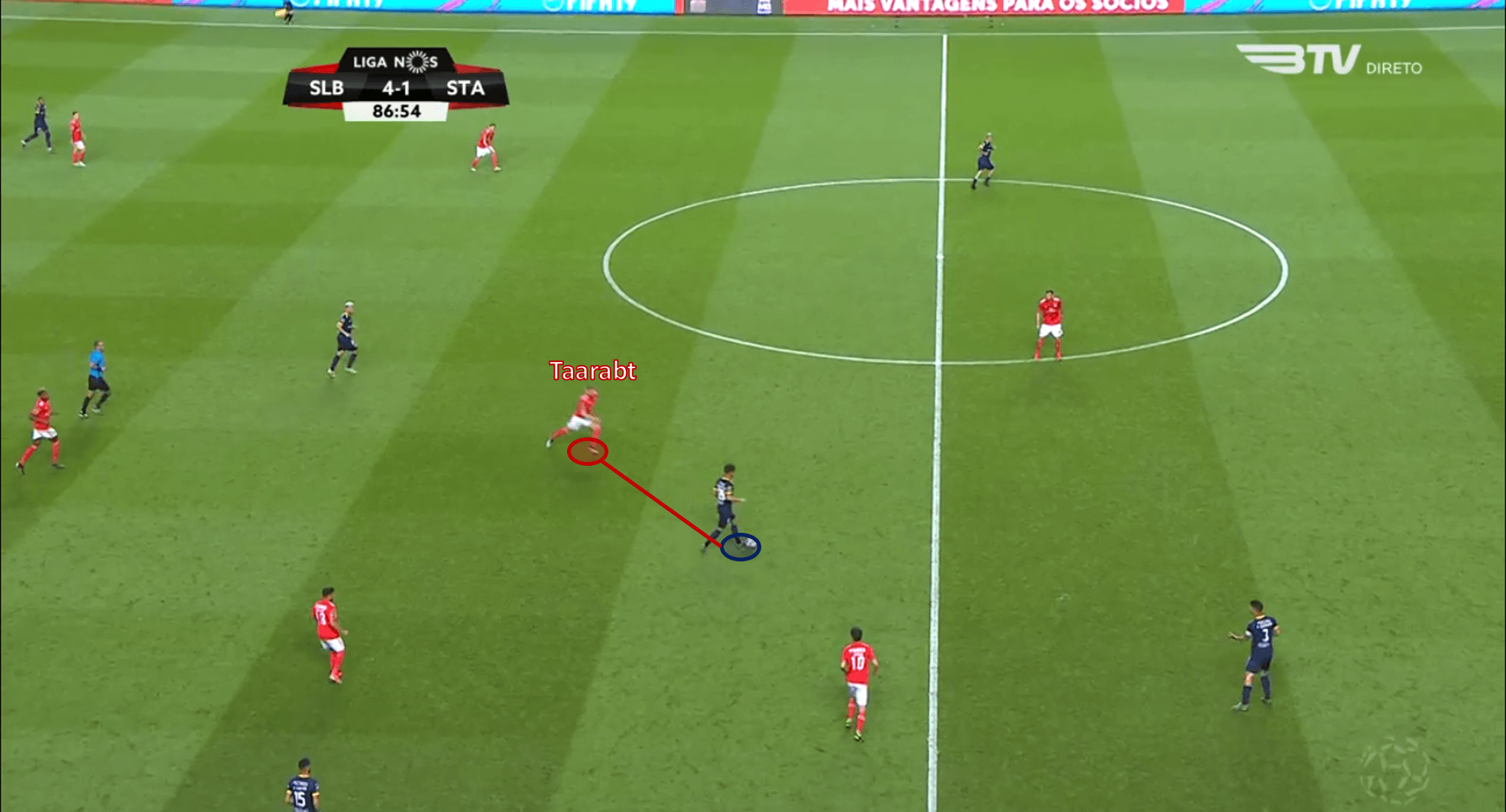
This intensive pressing from the midfield continues into the 2019/20 season as well under Lage with Taarabt.
Comparatively, Wolves press so infrequently in the attacking third, they attempted the least number of pressures in the final third in the Premier League in the 2020/21 season with 903, 70 behind 19th placed West Ham. On the other hand, they rank 7th in the league for attempted pressure in their defensive third with 2108. In this sense, they share similarities with Lage’s Benfica.
Although, Wolves under Nuno Espirito Santo, pack out their midfield, and force their opponents to build up down the wide areas. Rúben Neves and either Leander Dendoncker or João Moutinho will stay tight and compact in the midfield, screening from one side of the pitch to the other, tracking the movement of the ball, and disabling any ball progression through the middle of the pitch.
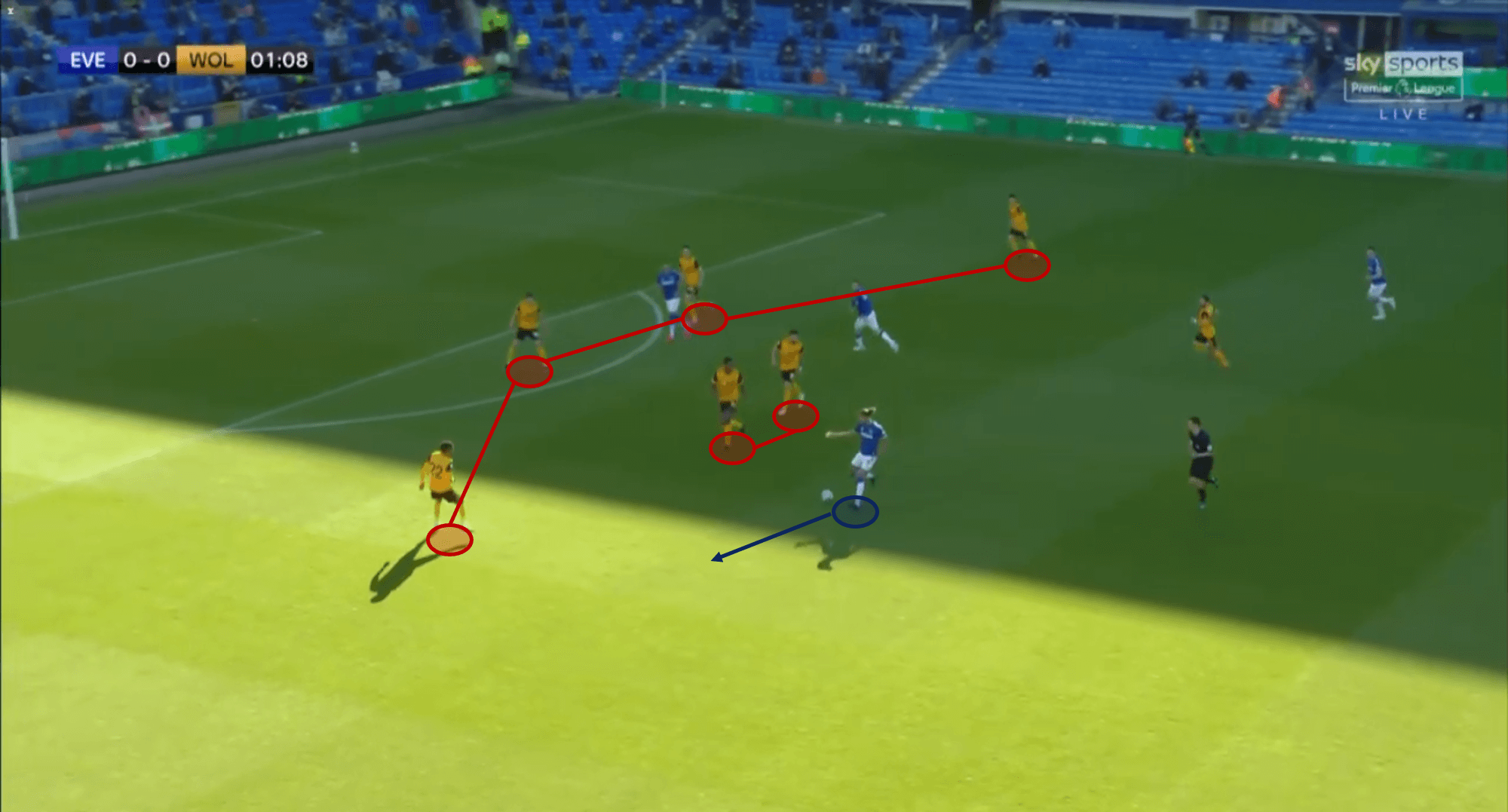
Even in a 4-2-3-1, the example above shows how compact Wolves are in the defensive phase of play, forcing Dominic Calvert-Lewin to pass to the flanks.
In both teams, all of the defenders are vital to ball progression, starting with the centre-backs and building up through the wing-backs/full-backs. Nuno has stated on several occasions the importance of Conor Coady in his side’s build-up play, via his superb long-range passing. In the centre of a back three, he completed 6.7 long balls per game, typically finding one of the wing-backs ways past the halfway line.
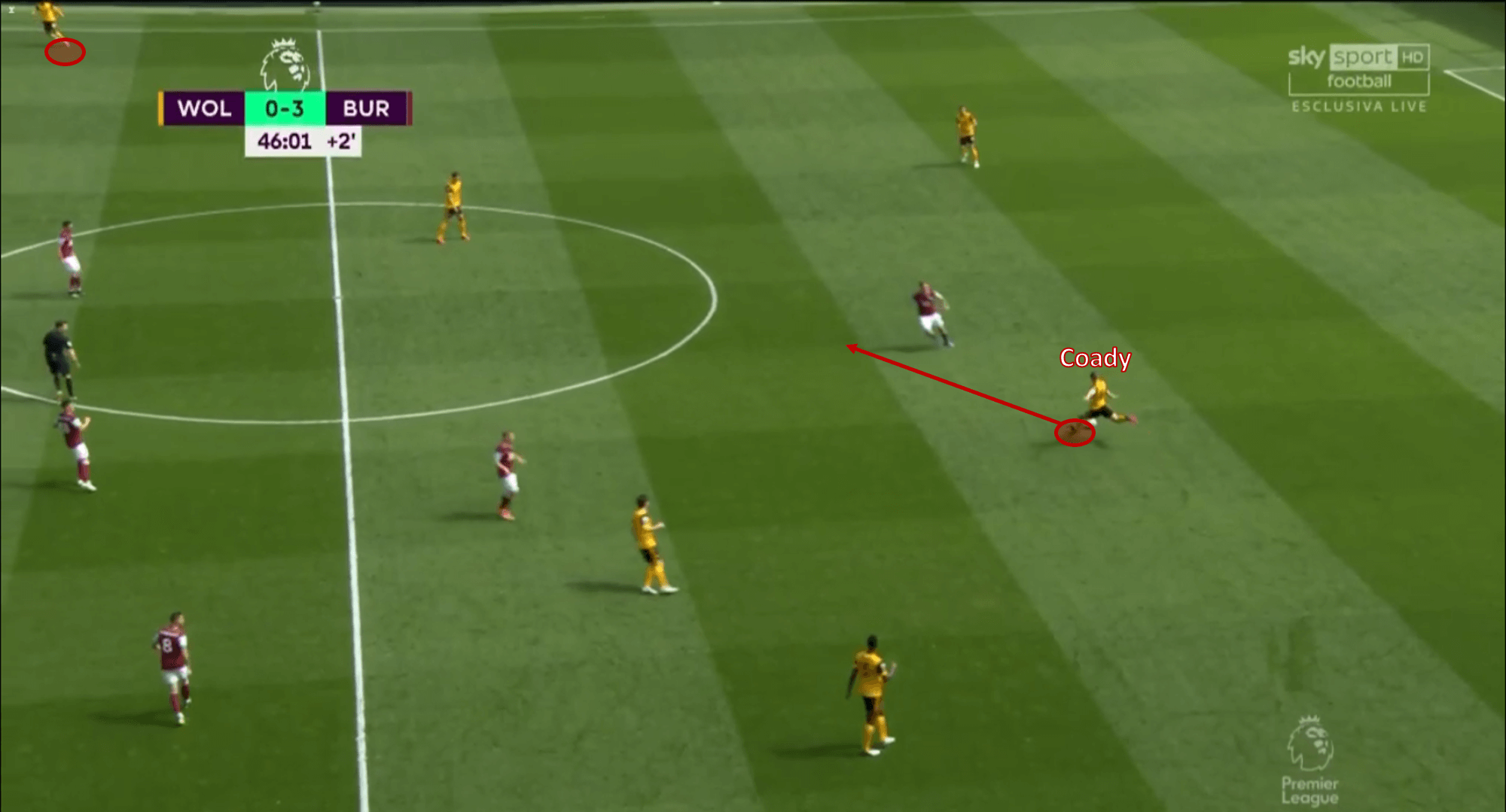
Coady here is seen playing the long-range pass out towards Semedo positioned just beyond the halfway line.
In the 2018/19 season, Ferro was completing a comparative 6.3 long balls per game, indicative of the importance to his side’s ball progression from deep. Álex Grimaldo was the main target in these situations, who was utterly devastating down the left flank that season, constantly finding pockets of space in very wide positions, with an excellent delivery under his toolbelt.
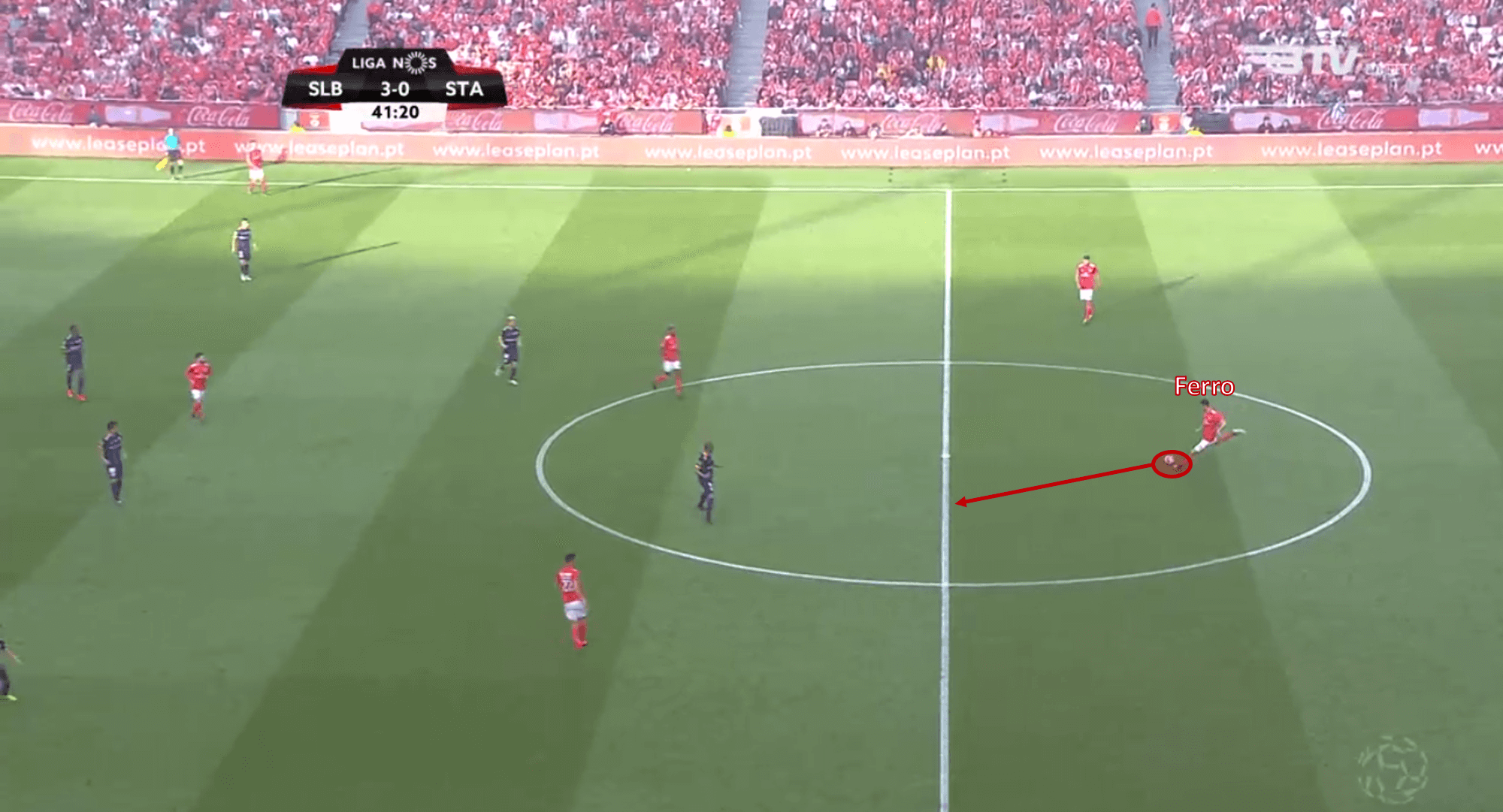
Ferro is seen here doing the same action, playing the long-range pass to the full-back positioned high up the pitch, Grimaldo, who is just off the screen.
Having said all this, Wolves’ defenders will have to adapt from years of operating in a back three to a back four, which is easier said than done. Each defender is now instinctively accustomed to having cover, be it Coady in between two defenders on either side of him, or the outside centre-backs with a wing-back dropping back to cover. Though Wolves’ most used formation this season just gone was the 4-2-3-1, so it is something Nuno was tampering with.
How the full-backs had dialogue with the midfield
Grimaldo and André Almeida were utterly devastating in the 2018/19 campaign and took the label of ‘attacking full-back’ to another level. They combined to 29 goals in the Primeira Liga alone, ranking third and fourth respectively in the assists chart for the division that season. Alas, such was the quality of their crossing ability, they did not need to always get in behind the opposition’s backline to find their targets.
They would position themselves very wide throughout all phases of build-up, making it easier in the early stages to progress out of the defence, whilst stretching the opposition defence in the final third. Grimaldo was the more conventional of the two in terms of progressing up the field. With Rafa ahead of him, a right-footed inside-forward, Grimaldo would overlap the Portuguese who would occupy the half-space.
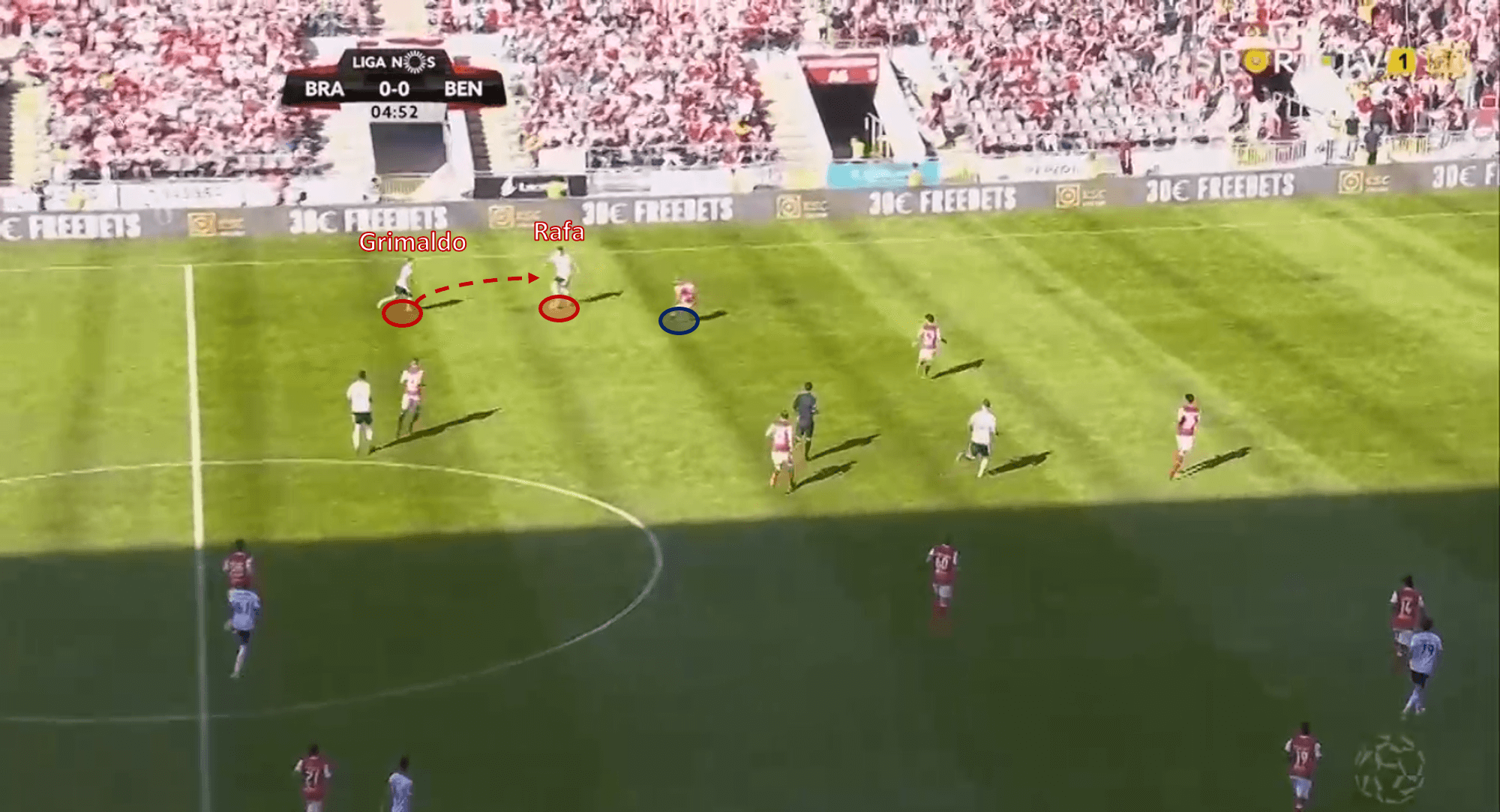
Rafa receives the ball on the left wing in midfield, with Grimaldo beginning to make the overlapping run.
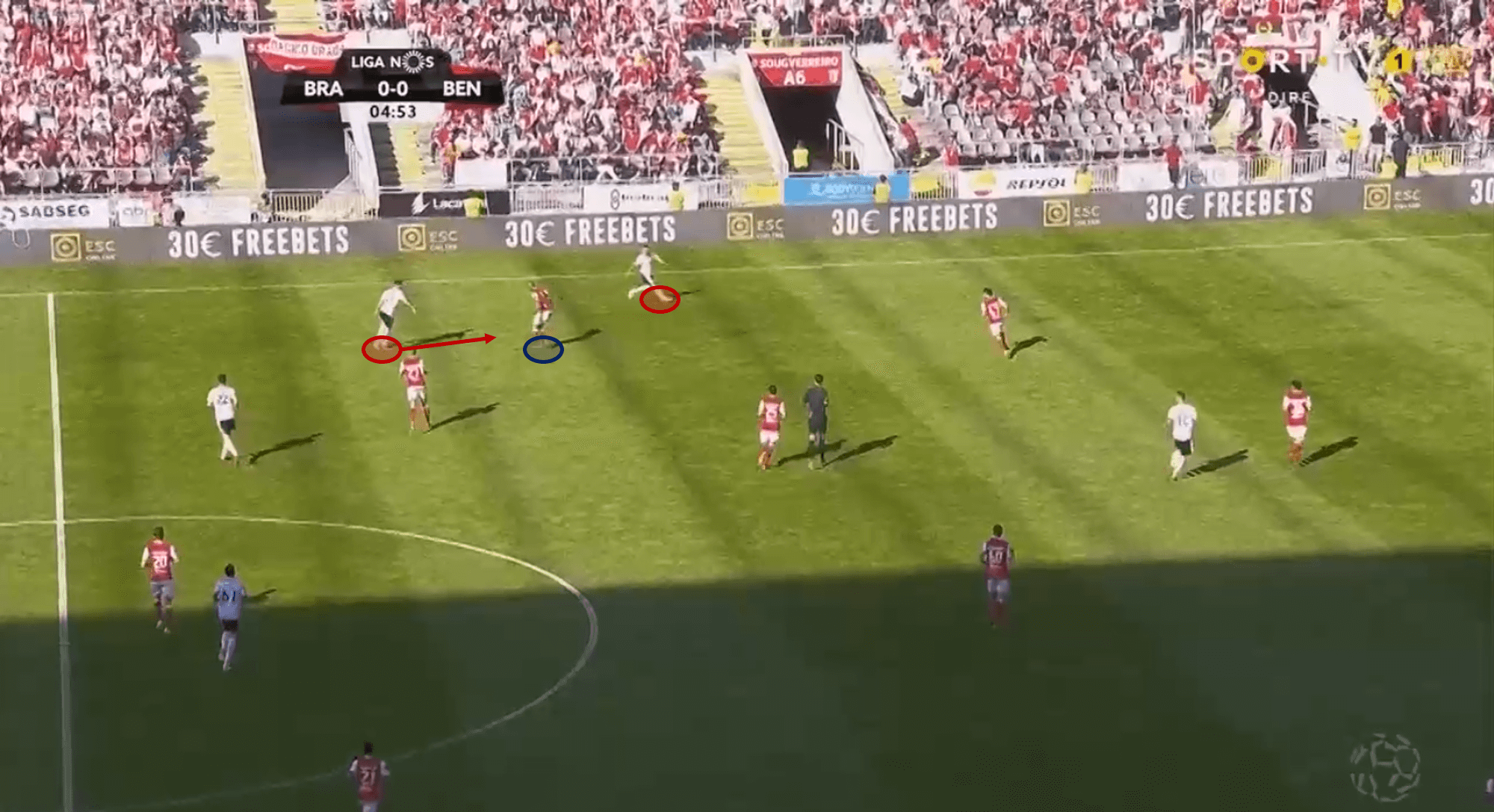
Further on in his run, Grimaldo has passed the Braga defender, and Rafa can easily pick him out with a through pass.
From here, he can either combine with Rafa or the nearest central-midfielder, usually Gabriel, who will find Grimaldo’s run into space with a delicately placed through pass. Benfica under Lage liked to attack with pace, and Gabriel was essential to this side of their tactics with his accurate long-range passing. He was consistently capable of playing pinpoint cross-field balls into players in space on the flank.
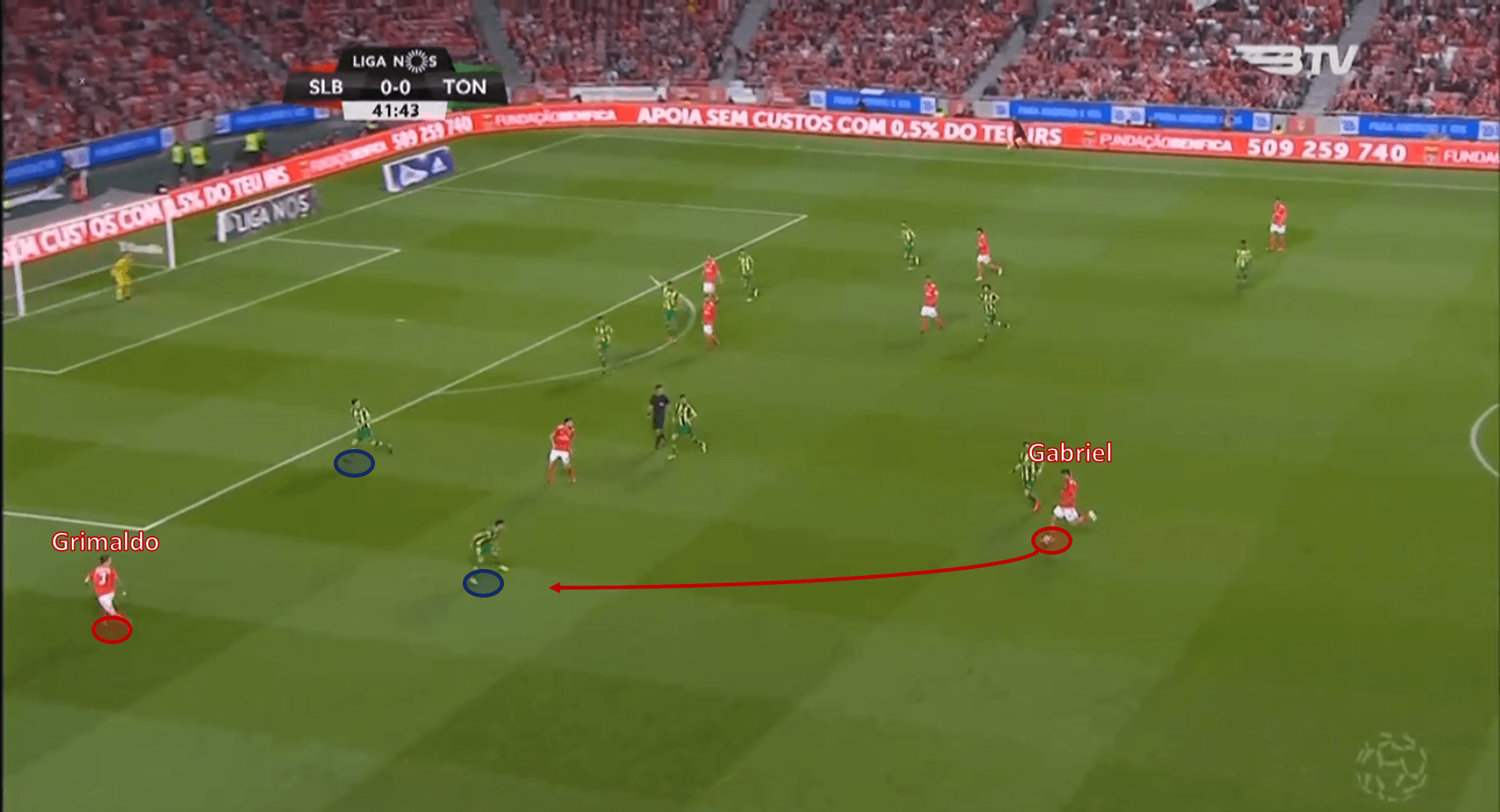
Here is just an isolated example of Gabriel pinging the ball through to Grimaldo in space just outside the penalty area, with plenty of targets to aim for inside the box.
Although this tactic was not deployed with frequency at Wolves thanks to possessing some attackers with magnificent dribbling abilities (Pedro Neto, Adama Traoré, Daniel Podence, etc) who enabled them to enter the final third through alternative methods, the likes of Rúben Neves or João Moutinho could just as easily play these defence-splitting through passes into the wide areas.
Once in the final third, Grimaldo in particular was comfortable with going either to the byline, producing the lethal cutback, or sending the sharp delivery towards the head of 6’2” forward Haris Seferović, who benefitted massively from the two full-backs. 10 of the 23 goals for the Swiss forward that season were assisted by either Grimaldo or Almeida.
One of the main beneficiaries of this tactic at Wolves next season could be Rayan Aït-Nouri. While Nélson Semedo has proven to be a capable defender and ball progressor in the Premier League, his final-third threat is seemingly limited, despite previously playing well for Benfica in this regard. Aït-Nouri is a gifted left-back with a blessed amount of speed and mobility, and if he works on his delivery in the final third, particularly the variation of them, he could be an effective player to have at Lage’s disposal.
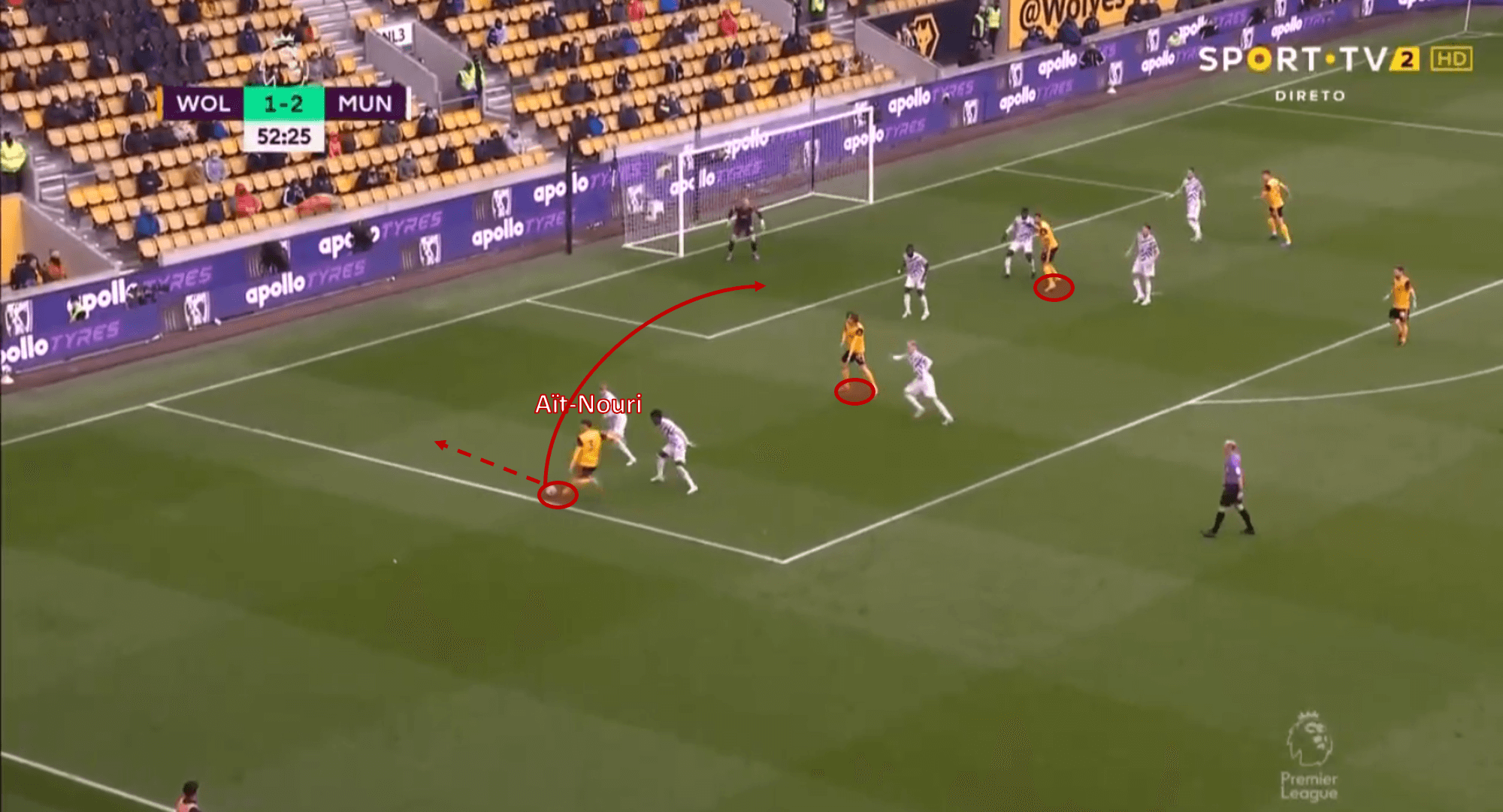
Aït-Nouri here is drawing back for the cross, but he also has the room to push towards the byline and potentially play the cutback to the near post to Silva instead.
Two-up-top and how this could work at Wolves
Famously, the second half of the 2018/19 season was when João Félix effusively broke into the first team and established himself as one of the league’s best young prospects. This, before his move to Atlético Madrid for an astounding €126 million, where he has now gone onto win the La Liga title. Before that, Félix was pivotal to a record 37th Primeira Liga title as a second-striker, partnering up with the league’s top goalscorer; Seferović.
Félix began the season as a rotation option out on the right-wing for then-coach Vitória, but Lage saw potential in the teenager as an out-and-out centre-forward. It resulted in a goal contribution every 79 minutes in the league (15 goals and 7 assists), a fabulous return on top of a few goals in Europe too. Much of this success was thanks to the partnership that was enabled by Lage, which allowed Félix to benefit off of his excellent movement inside the penalty area.
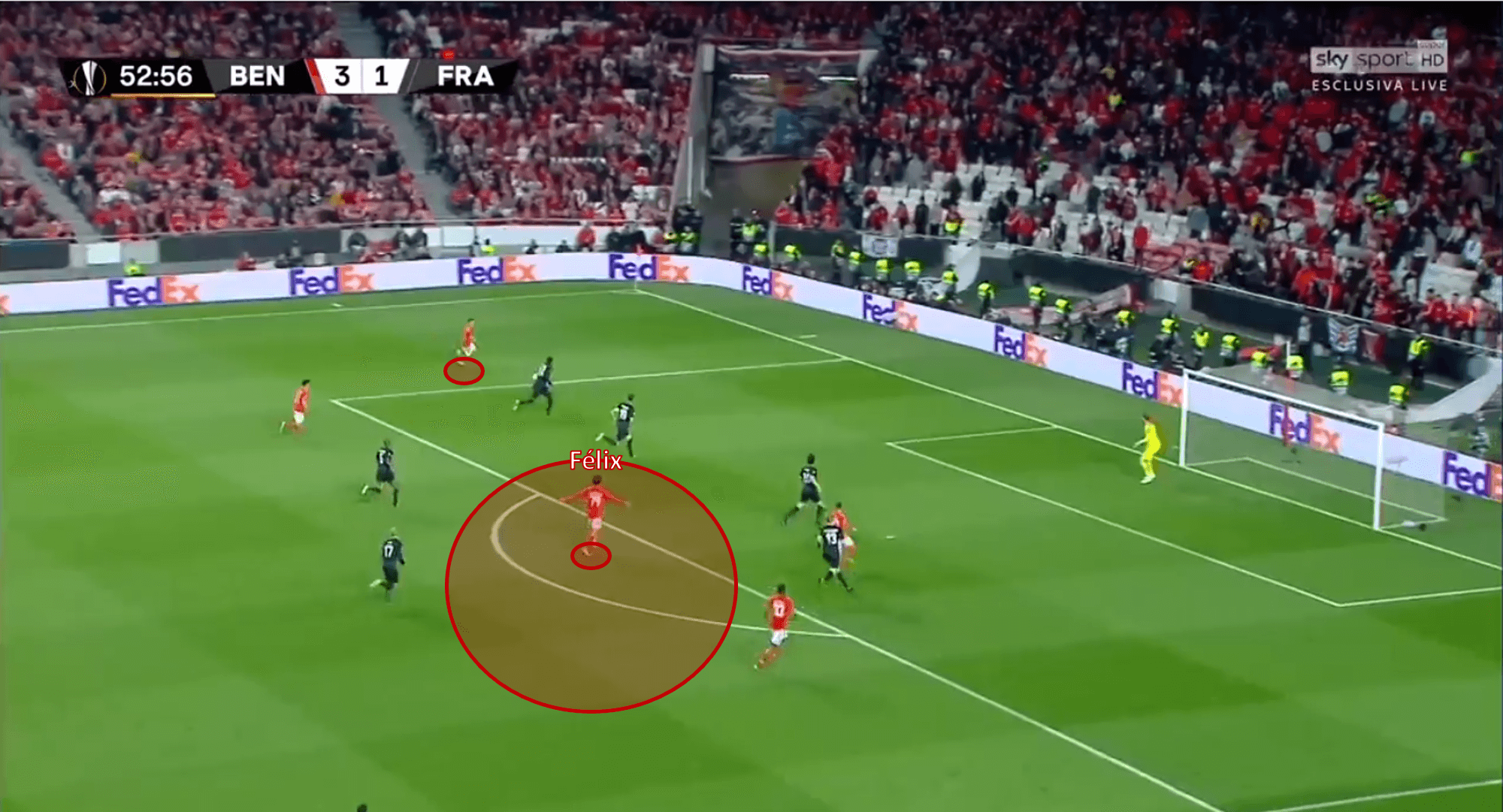
Félix smartly delayed his run into the penalty area which allows him acres of space to call for the ball.
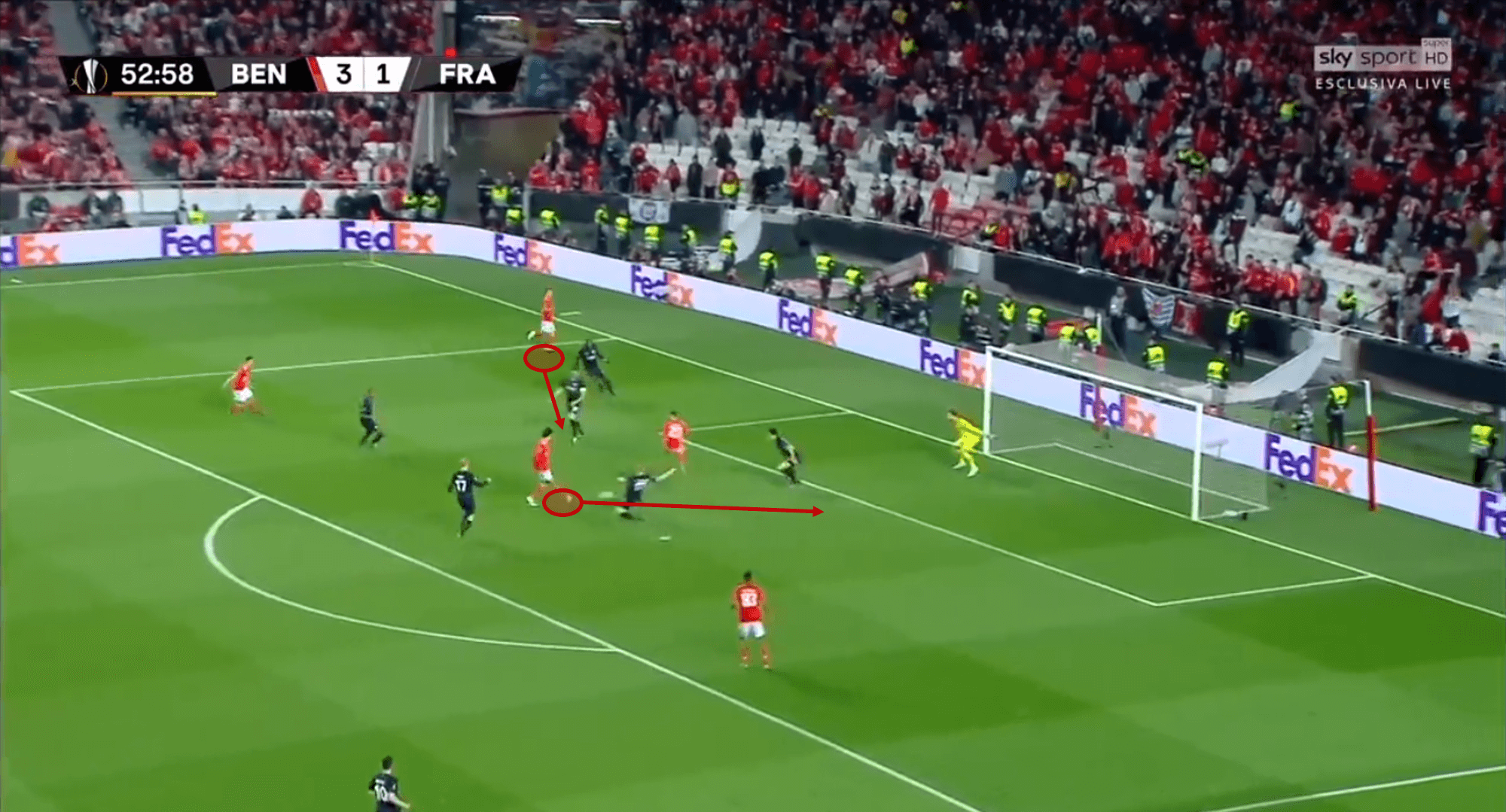
For his hattrick, the then 19-year-old calmly slots the ball into the bottom-right corner past Kevin Trapp.
His technical attributes, ability to switch directions quickly and natural nose for a chance on goal made him the perfect partner to Seferović. Seferović, the Swiss international, acted very capably as a clinical forward who utilised his physical attributes wisely to force Benfica up the pitch and into the final third, where he could distract defenders, and create space for his compatriot Félix.
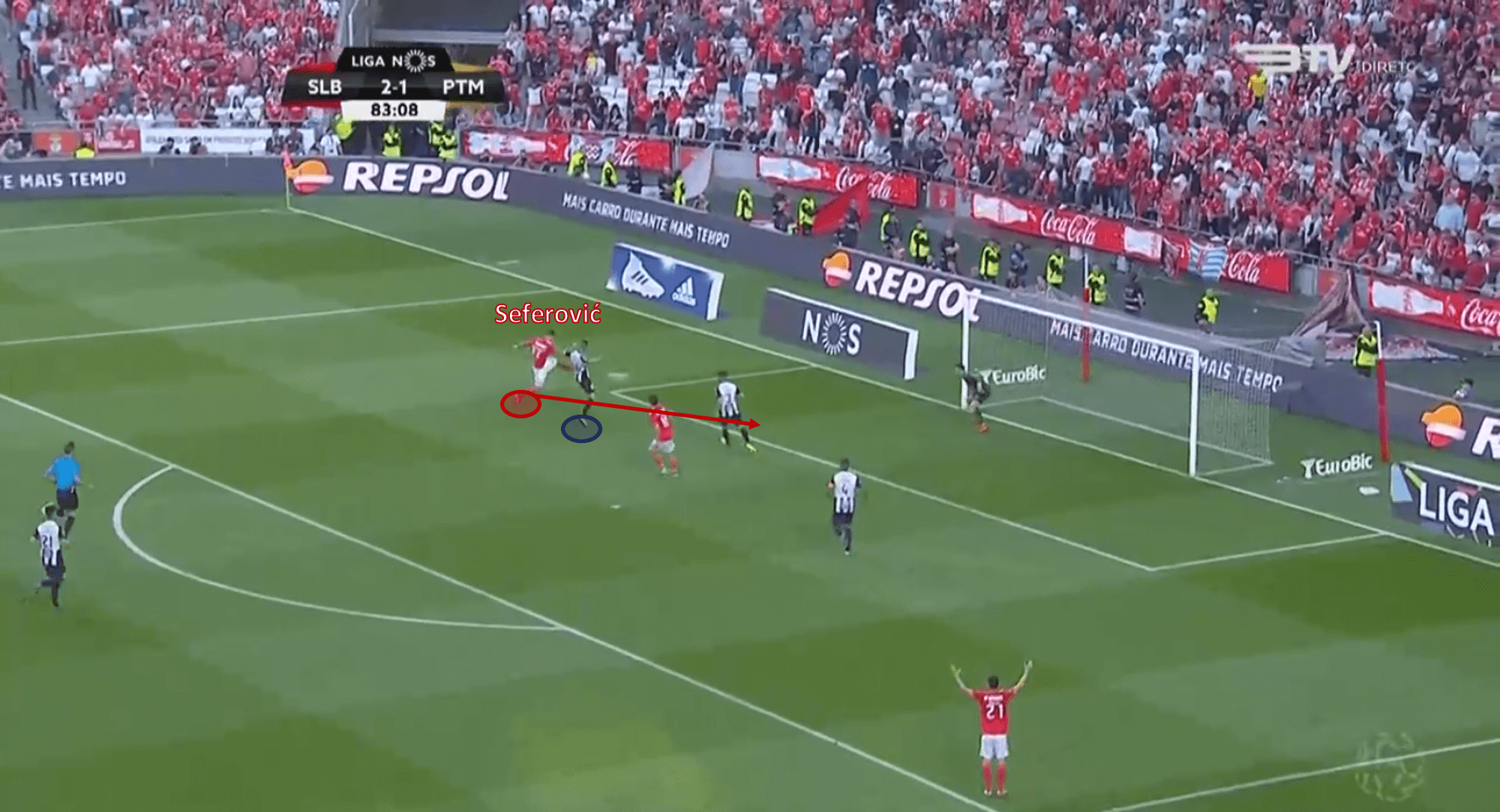
Seferović has a wonderful range of finishes, but his volley against Portimonense was one of his best in the 2018/19 campaign.
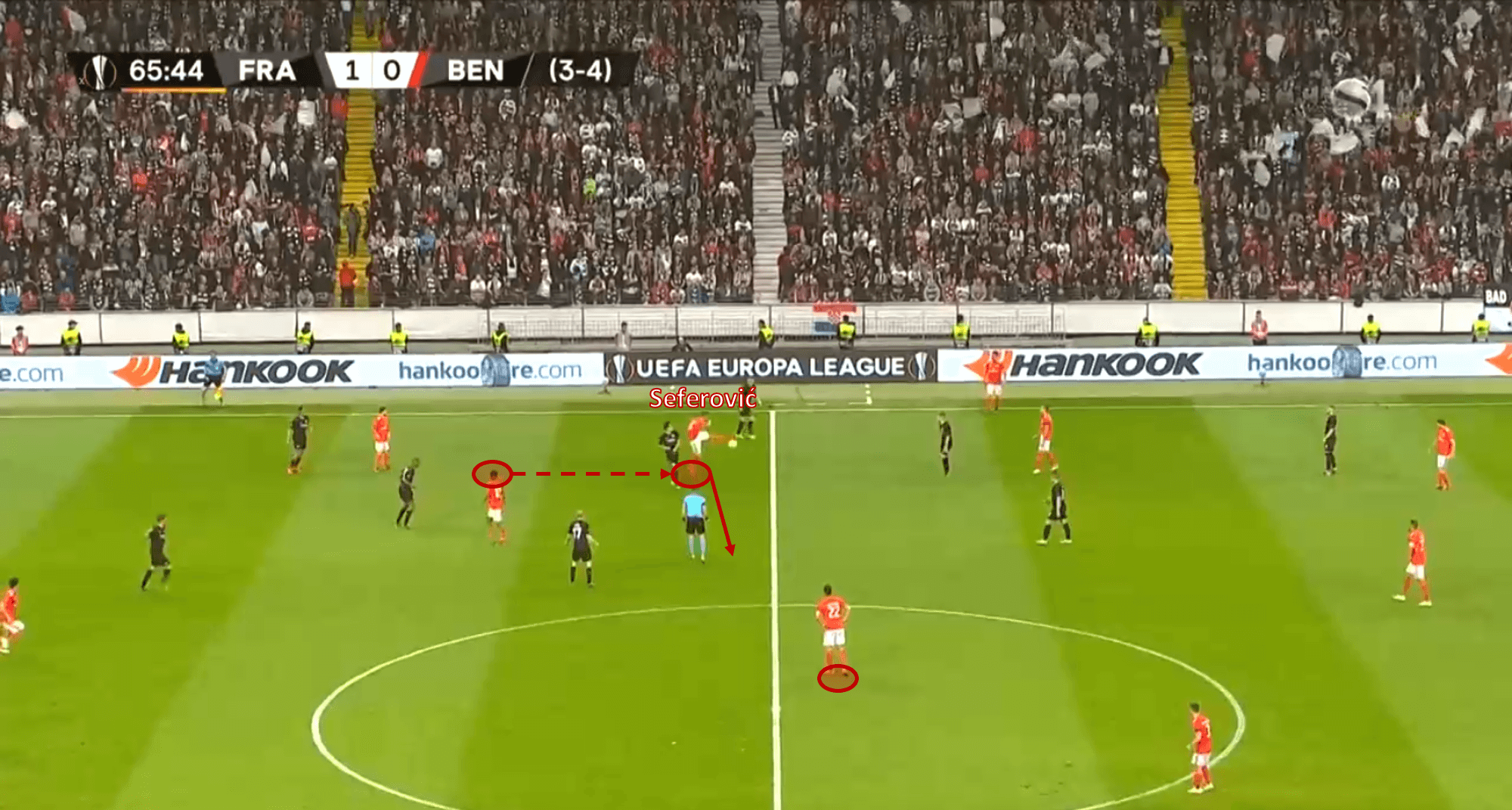
The Swiss striker here drops deep and links up ably with the midfield.
Wolves have two strikers with similar skillsets and profiles to the two aforementioned forwards. Fábio Silva is a teenage Portuguese forward with excellent movement inside the penalty area, as well as some decent technical attributes, and Raúl Jiménez is the physical striker with a clinical edge. Silva has just come off the back of a tough first season in England, but he did demonstrate some bright sparks towards the backend of the campaign, which bodes well heading into the 2021/22 season.
The 18-year-old is still growing physically and could yet become more adaptable in trying scenarios within the Premier League, but at the moment he is most suited to being an off-the-shoulder type striker, utilising his sharp movement and pace. He is an instinctive finisher who fares better with less time to think when striking the ball, which is an attribute that meshes well with his preference to create half a yard of space and shoot at the goal.
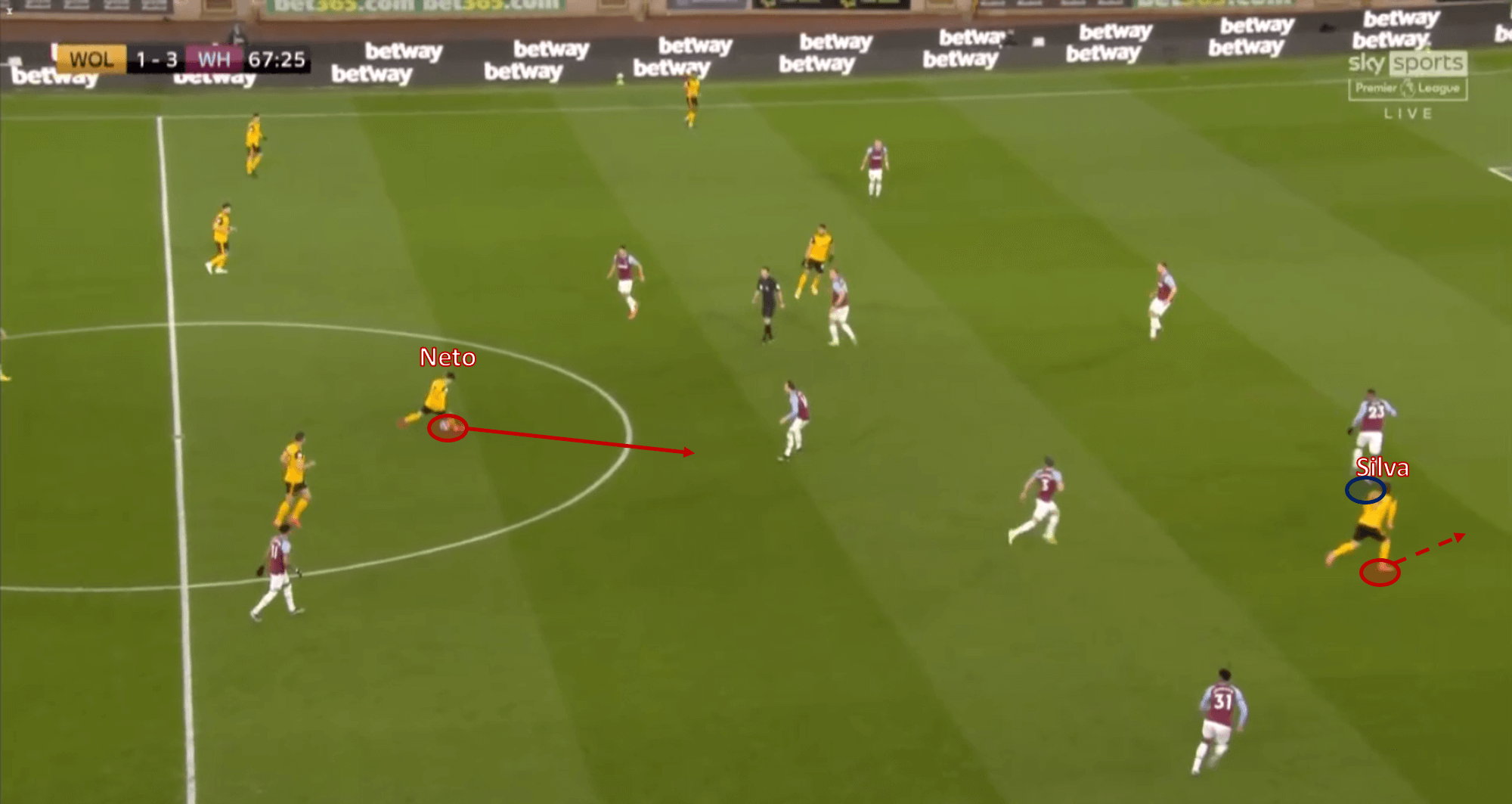
Pedro Neto here cleverly spots Silva’s run in behind the West Ham defence and plays the defence-splitting pass.
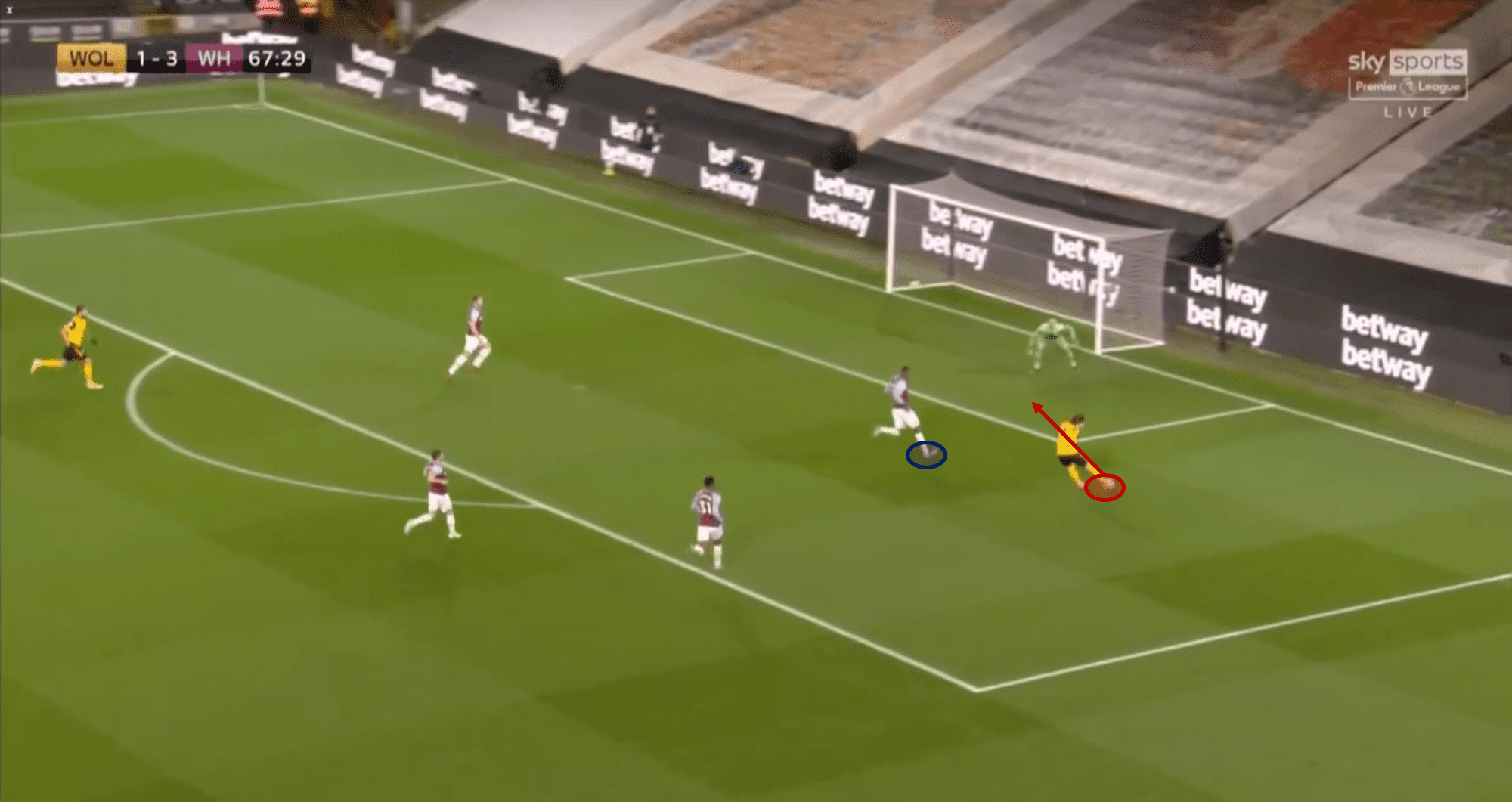
The 18-year-old perhaps lets the ball run a bit too wide here – but indicative of his excellent finishing ability, he slots the ball home into the bottom left.
In Jiménez, Lage has a proven Premier League striker, who has thrived in Nuno Espirito Santo’s transitional system. Although, the Mexican does also possess similar technical attributes to a player such as Roberto Firmino at Liverpool. He is happy to drop deep and combine with the midfield to draw in their opponents and create space for their overlapping full-backs or wide-forwards.
When Diogo Jota was at Wolves, he formed a solid relationship with Jiménez, often occupying a position not too dissimilar to that of a second-striker like Félix was at Benfica. So, the 30-year-old is used to sharing the penalty area with another forward, albeit somewhat different from a tactical perspective. His finishing abilities do, however, draw in opponents, which could benefit Silva massively in the Premier League.
Lage could decide to scrap the 4-4-2 in the Premier League, as he did tinker with a 4-2-3-1 in his second season at Benfica, negating the need for two strikers up top, but if he were to continue with two centre-forwards upfront, it has the potential to succeed. Here at Wolves are two strikers with similar profiles to the successful duo that Lage formed, so there is a chance.
Final verdict
The FA have officially cleared Lage as legible to manage in England, and his confirmation as Wolves’ next manager is imminent. What is unclear, however, is if the Portuguese coach will bring the best out of this Wolves team. It is packed with Portuguese talent, but his second season at Benfica was underwhelming, it has to be said. A strong start tailed off fairly quickly after heavy investment. In a post-pandemic world, he cannot expect the same level of investment.
From a tactical perspective at the very least, the profile of this squad could adapt to Lage’s tactics. Ball-playing centre-backs, attacking full-backs, tactically astute box-to-box playmakers, plus a technical and physical striking combination, it could transfer well. I would be cautious about predicting immediate success, but over time, we could see Wolves produce exciting football, an absolute antithesis to the type of football played at the Molineux in 2020/21.





Comments